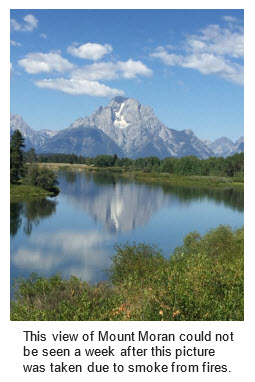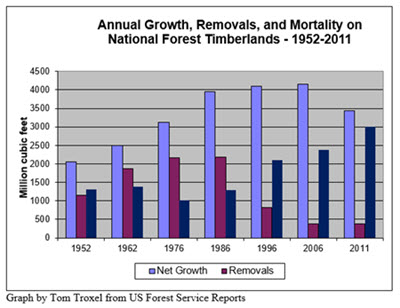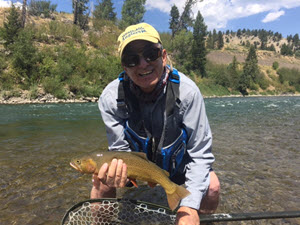For almost thirty years, August has meant returning to Jackson, Wyoming, the Grand Teton National Park, the Bridger-Teton National Forest and the Yellowstone ecosystem. It is fishing, hiking, photography, reading under the aspens, the Grand Teton Music Festival….and more fishing. Most importantly, it is quality family time.
The Bridger-Teton National Forest is at our backyard in Jackson and as remote as you can get in the Continental United States, which is our goal during the August Congressional recess (especially this election year).
The Bridger-Teton is 3.4 million acres including 1.2 million acres of designated wilderness, making it the third largest National Forest outside of Alaska….and bigger than Yellowstone National Park. Wildlife on the Bridger-Teton is diverse and a major attraction. The Forest provides habitat for an abundance of species. Visitors are likely to see trumpeter swans, Sandhill cranes, coyotes, bald eagles, and elk. Other wildlife includes moose, mule deer, antelope, black bears and grizzlies too, along with over 355 species of birds.

While the Bridger-Teton National Forest comprises a large part of the Greater Yellowstone Ecosystem, it is overlooked by many of the 4-5 million visitors to Yellowstone each year. Yellowstone is actually surrounded by five national forests and the health of these forests has a direct impact on the health of Yellowstone, and vice versa. In fact, many of our most famous national parks adjoin national forests.
The Bridger Teton is one of 154 national forests and 20 grasslands in 44 states and Puerto Rico administered by the Department of Agriculture’s Forest Service. The mission of the Forest Service, as distinct from the National Park Service, is to sustain the health, diversity, and productivity of the national forests and grasslands to meet the needs of present and future generations. It is a multiple-use goal.
Gifford Pinchot, first Chief of the Forest Service, summed up the mission of the Forest Service: "to provide the greatest good for the greatest number of people in the long run."
This year, our family returned to Washington at the end of August more concerned than ever about the future of the Bridger Teton National Forest and the other Western National Forests that are struggling to survive.
There was more “brown” this year…..large sections of trees that have been killed by beetles and climate change or burned by fire. Just this summer, the Cliff Creek, Berry and Lava Mountain fires have consumed more than 30,000 acres and cost more than $12 million to fight.
“Fuel moistures are at record low levels. This coupled with beetle mortality and climate change in the past few decades, along with not enough resources for proper management, means the simple buildup of timber on the forest is increasing,” said Tricia O’Connor, the Bridger-Teton Forest Supervisor. “In addition, the abundance of snags (dead standing trees) due to the beetle kill creates a situation where it can be too dangerous to send firefighters on the line to fight the fire.” And these fires are small compared to what is happening in California.
The resources needed to properly manage the forests are not available because each year funding for fire suppression consumes a larger percentage of the Forest Service budget. That will continue until the Congress establishes an emergency fund for fires, as we have for other natural disasters, and until we start harvesting some of the millions of tons of forest fuels that have accumulated over the last three decades.
During the time we were in Wyoming, smoke from forest and park fires completely blocked the famous view of the Grand Tetons and the highway from Jackson, Wyoming to Yellowstone had to be closed.

Mr. Jim Neiman, the President of the Board of the Federal Forest Resource Coalition, and from Wyoming, understands the problem. According to Neiman, “Congress needs to enact legislation that will provide adequate funds for fire suppression plus expanded forest management to reduce the potential for catastrophic forest fires. The dramatic increase in spending each year to fight forest fires is taking the money from forest management…..resulting in more fires. In short it is a Catch-22.”
Secretary of Agriculture Tom Vilsack makes the larger point that funding fire suppression out of the USDA discretionary budget not only drains funds from forest management, but it drains funding from all other USDA discretionary budget accounts. That includes agriculture research, food safety and rural development, along with other priorities. In short, fire suppression is an emergency and there should be a separate account to deal with this problem.
The following graph makes two important points. First, in 1962, the National Forests harvested 75% of the net growth. By comparison, in 2011 this had dropped to just 10%. That means 90% of the growth is not harvested, year after year, and is piling up becoming fuel, making the fires more intense and more expensive to extinguish. The fires we are seeing today are more catastrophic and more damaging than they were even a few years ago.
Second, the annual mortality of trees continues to increase, largely the result of catastrophic insect epidemics and fires. These trends do not bode well for the health of our national forests.
Thinning the forests not only mitigates any fires while providing jobs but it provides habitat for wildlife, clean air, and more fresh water. Yes, proper management of the forests, which includes thinning, actually improves the environment.
Our National Forest are an American treasure. The Congress should move quickly to change how the Forest Service pays for fighting fires and provide the Forest Service with the resources and the tools it needs to provide better management. By investing in forest restoration and management USDA can reduce the fire threat, provide good rural jobs and improve both the health of the forest and the environment too.
As we celebrate the 100th anniversary of the National Park Service this year, let’s not forget the Forest Service and the 154 national forests they manage. The National Park Service and the Forest Service have different mandates and different rules for management but both are protecting important national resources…..resources that are more interconnected than often realized.

Marshall Matz specializes in agriculture, including the Forest Service, at OFW Law in Washington, D.C. mmatz@ofwlaw.com
#30
For more news, go to: www.Agri-Pulse.com
